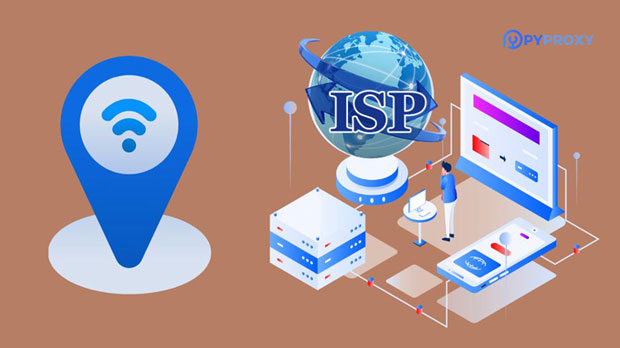Static ip proxies have become essential tools for businesses and individuals seeking anonymity, security, and control over their internet connections. Among the various providers available, PYPROXY and Blue Proxy stand out as two prominent solutions. This article presents a comprehensive analysis of the reliability of these two static ip proxy services, exploring their performance, features, and suitability for different use cases. In the following sections, we will compare these two services based on critical factors such as uptime, speed, security, scalability, and customer support, helping clients make an informed decision when choosing a static IP proxy provider. Introduction to Static IP ProxiesStatic IP proxies are widely used for bypassing geographical restrictions, scraping websites, and securing sensitive business operations. Unlike dynamic IP proxies, which change their IP addresses frequently, static IP proxies maintain the same address for a longer duration. This consistent IP address ensures more stable and reliable access for specific tasks that require ongoing and uninterrupted connections. For businesses, static IP proxies can significantly improve the efficiency of data collection, prevent IP blacklisting, and enhance security.However, not all static IP proxy services are created equal. Some providers deliver better performance, security, and customer support, which directly impacts their reliability. In this context, we examine two popular services: PyProxy and Blue Proxy.PyProxy: A Detailed Reliability Overview1. Uptime and PerformancePyProxy is known for offering high uptime rates, typically above 99%. The provider claims to have a robust infrastructure that minimizes downtime, making it a reliable option for businesses and developers who require consistent service. With a range of geographically distributed servers, PyProxy ensures that clients can access IP addresses from various regions, which helps in maintaining the overall reliability and speed of the service.2. Speed and LatencyThe speed of a static IP proxy is crucial for tasks such as web scraping, automated testing, or secure browsing. PyProxy typically offers fast connection speeds, thanks to its optimized routing and minimal packet loss. However, speed can be affected by factors such as server load and the client’s geographical location relative to the proxy server. PyProxy’s speed is reliable but may show slight variability depending on traffic conditions.3. Security and EncryptionPyProxy provides robust encryption options for its users, ensuring that all data transmitted through its proxies remains secure. This is essential for businesses handling sensitive information, as it protects against potential breaches and ensures compliance with privacy regulations. PyProxy also offers features like IP whitelisting and VPN support, which enhance the overall security posture of users.4. Customer Support and ScalabilityPyProxy is known for providing reliable customer support. With dedicated teams available via email and live chat, clients can expect timely responses to technical issues. Furthermore, PyProxy offers scalability, allowing users to upgrade their proxy services as their business grows. This makes it a suitable choice for both small businesses and large enterprises.Blue Proxy: A Detailed Reliability Overview1. Uptime and PerformanceBlue Proxy offers a strong uptime rate of around 98-99%. While this is competitive in the proxy industry, it does not quite match PyProxy’s consistently higher uptime. The provider also features geographically diverse servers, although the availability of servers in certain regions may be more limited compared to PyProxy. Despite this, Blue Proxy still ensures stable access in most major markets.2. Speed and LatencyBlue Proxy provides reliable speeds, with latency varying based on the location of the user and the proxy server. While Blue Proxy generally offers good performance, users in remote regions or those requiring access to high-bandwidth resources might experience slower speeds during peak times. Nevertheless, Blue Proxy’s infrastructure supports quick and stable connections for the majority of use cases.3. Security and EncryptionBlue Proxy places a significant emphasis on security, offering 256-bit SSL encryption to protect user data. The service also supports features like IP rotation, which can be useful in certain cases for added anonymity and privacy. However, compared to PyProxy, Blue Proxy’s security options may feel slightly less comprehensive, especially in terms of additional features such as two-factor authentication or advanced IP filtering.4. Customer Support and ScalabilityBlue Proxy offers 24/7 customer support through email and phone. While the support team is generally responsive, some users report longer response times compared to competitors. In terms of scalability, Blue Proxy does offer a range of proxy packages, but the flexibility of customization may not be as extensive as PyProxy’s. This might be a limitation for users with specific or growing needs.Comparing PyProxy and Blue Proxy: Key Factors to Consider1. Uptime and ReliabilityBoth PyProxy and Blue Proxy boast strong uptime rates, but PyProxy takes the lead with its consistently higher performance. For businesses that cannot afford downtime, PyProxy may be the more reliable choice.2. Speed and LatencyBoth services offer competitive speeds, but PyProxy’s routing and network infrastructure generally provide faster and more stable connections. Blue Proxy, while reliable, may experience slight speed drops under heavy load or during peak traffic times.3. Security and PrivacyPyProxy offers a more comprehensive suite of security features, including advanced encryption and IP whitelisting. Blue Proxy’s security features are solid but may not be as extensive, especially for businesses with stringent privacy requirements.4. Customer Support and ServiceWhile both providers offer customer support, PyProxy is often praised for its faster response times and more comprehensive service. Blue Proxy’s support is reliable, but some users may find that their issues take slightly longer to resolve.5. Scalability and FlexibilityPyProxy offers more scalable and flexible solutions, making it a better choice for businesses with dynamic needs or those that expect to expand. Blue Proxy, while sufficient for many businesses, may not provide the same level of customization or growth potential.Conclusion: Which Proxy Service Is More Reliable?When comparing PyProxy and Blue Proxy, it’s clear that both have their strengths. PyProxy excels in terms of uptime, speed, security, and scalability, making it a top choice for businesses and individuals requiring high reliability and performance. Blue Proxy, while offering solid service, may not be as consistently reliable or feature-rich as PyProxy. However, for businesses with less demanding needs or those in regions where Blue Proxy offers stronger performance, it could still be a valuable option.Ultimately, the choice between PyProxy and Blue Proxy will depend on your specific requirements, including the level of security needed, geographical considerations, and the importance of uptime and speed for your business operations.
Sep 11, 2025


































































